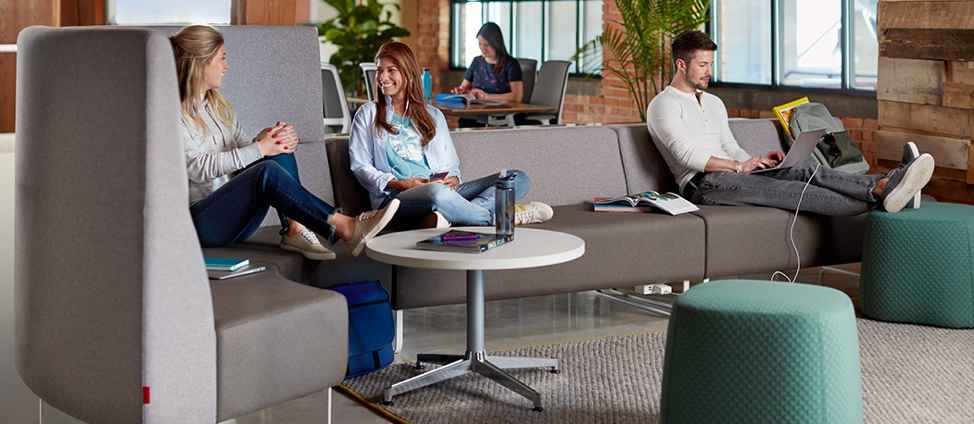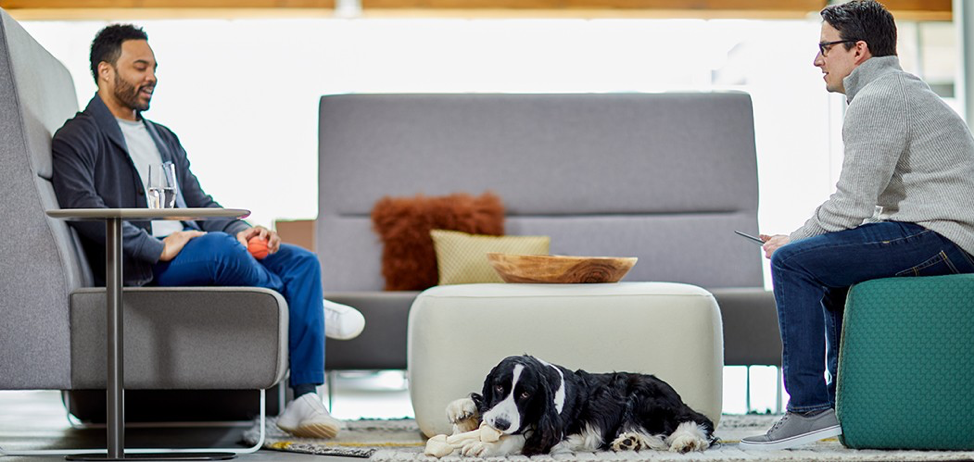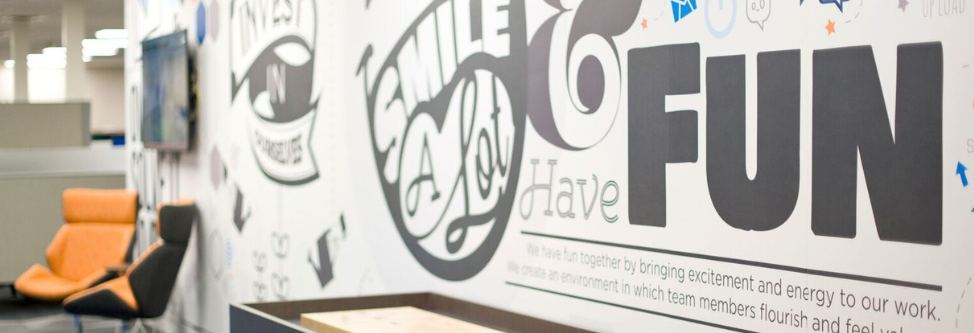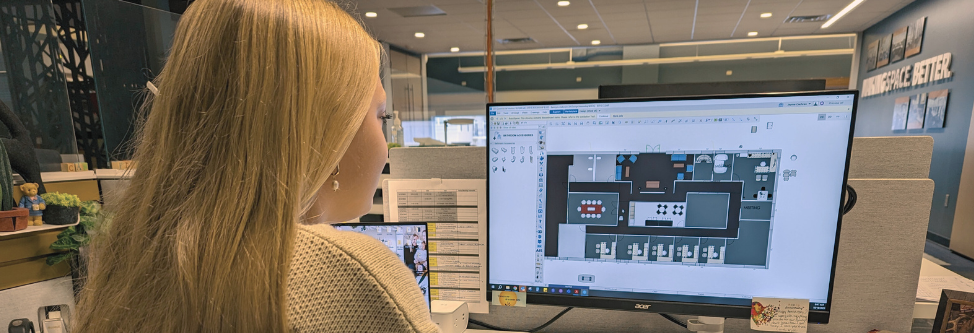
3 Tactics for Investing in Your People
Why well-being should be embedded in organizational strategy
NeoCon is an opportunity to open our eyes to new possibilities—architecture, interior space, furniture, materials, technology—and new ideas about people in the workplace. If we believe human capital is the most expensive asset any organization invests in, why wouldn’t we want to nurture them to higher performance—just like we do with any other investment?
Dr. Mike O’Neill and Rex Miller, co-authors of The Healthy Workplace Nudge, spoke to a group of professionals interested in this very topic during NeoCon. At the heart of the discussion? Why well-being should be embedded in organizational strategy.
The workplace continues to evolve into an environment where people get work done in a much more social way. It is not defined by a straight eight-hour workday. No longer does every employee sit at a desk doing their individual work. More collaborative activities within the spaces that support them are becoming the standard. Spaces are designed along a spectrum that encompasses game rooms to conference rooms, with every imaginable option in between.
Some interesting questions and dialogue came up during the session.

1. How do you give people control in their environment?
Creating a variety of spaces that satisfy the human need to accommodate specific work can reduce stress that people feel. With tight deadlines, limited budgets, and no loss for work to fill time, the best thing we can do is reduce the “friction” to getting things done. Giving the organization autonomy to choose where to do work means individuals have the freedom to control their environment. That sense of control is key to balance the other stressors that people often have little or no control over.
2. How do you create a strong organizational culture to support well-being?
Since culture is centered on the values, beliefs, and behavior of the organization, integrating well-being into strategic planning and decisions means that it becomes part of the DNA or culture of the organization. Supporting the culture with the appropriate space and policy is imperative for the desired state of culture to survive. Of course, part of doing this is first understanding what the existing culture is—and there are ways to assess it. Haworth has an assessment tool that is the outcome of work with the University of Michigan and used for over a decade to understand both the existing and desired culture within organizations.
3. How can you be purposeful in creating “good” nudges and reducing “bad” nudges?
Thoughtful planning with well-being as a priority does not have to add cost or be difficult to initiate. Integrating legible spaces—those that are intuitive to the user—is another way to reduce stress in the workplace. Creating a series of landmarks that “guide” people and adjacencies that allow people to vary their physical posture are ways to easily and affordably implement “good” nudges. Reducing “bad” nudges can be achieved by either eliminating or adjusting access to elements that either add to stress or physically compromise well-being. Just the opposite of positive adjacencies can be negative adjacencies, causing distraction and frustration (stress) and not having appropriate alternative choices available to use.

Everyone personally identifies with the issues—and is intent on understanding how to solve for them. As we move into a workplace with the next generation of workers (Gen Z), we are keenly aware that what has worked in the past will not be most effective in the future workplace.



